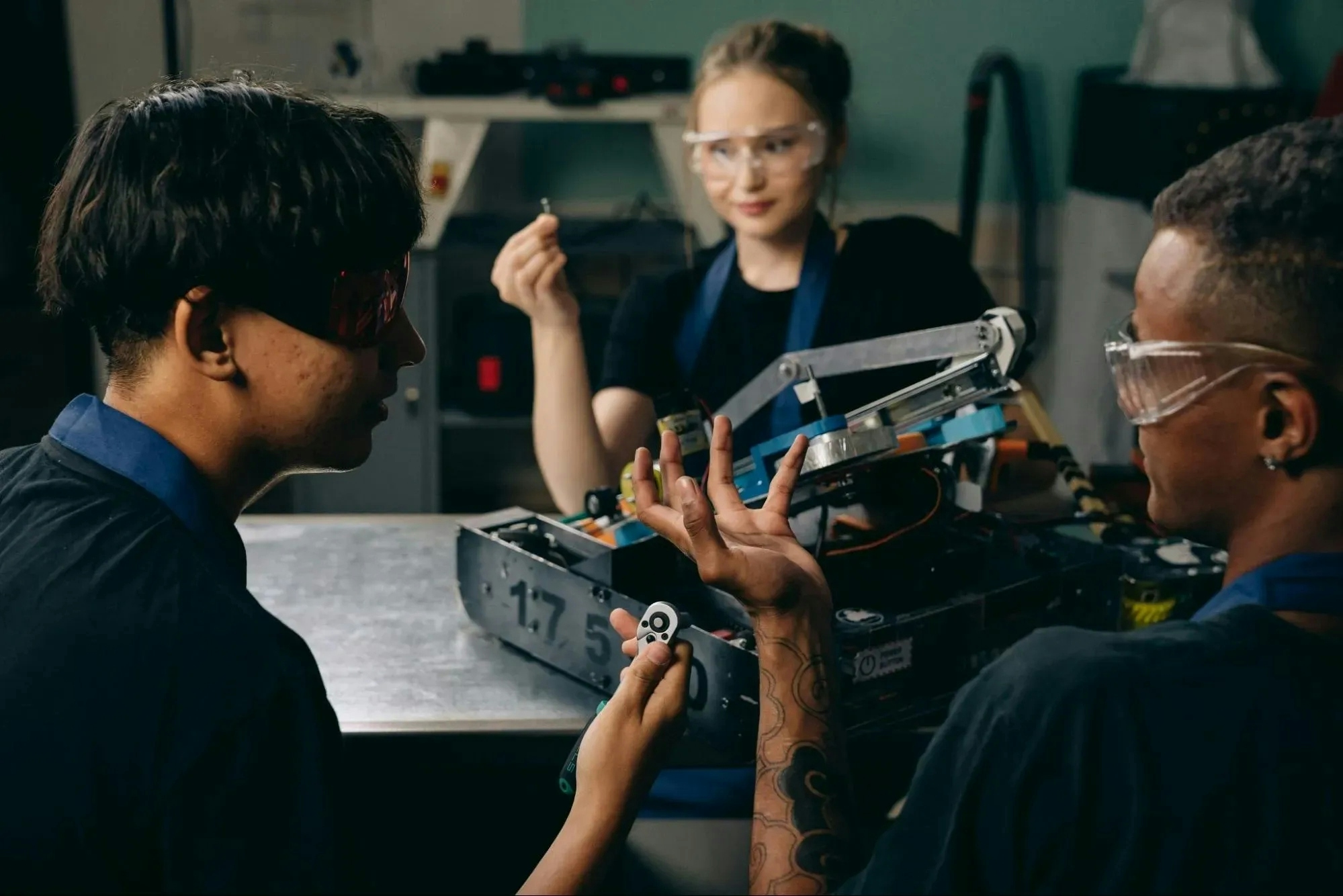What Leadership Styles Are Effective for Managing a Multigenerational Manufacturing Workforce?
In the quest to navigate the complexities of leading a diverse, multigenerational workforce, we've gathered insights from seasoned professionals, including a manufacturing plant manager. Alongside expert opinions, we've compiled additional answers that encapsulate the varied approaches to fostering a harmonious and productive work environment. From leveraging generational strengths to strategizing with tech-savvy approaches, discover how leaders are reshaping their styles to unite their teams.
- Adopt a Flexible Management Strategy
- Leverage Generational Strengths and Motivations
- Understand and Respect Diverse Values
- Foster Inclusive Decision-Making
- Inspire with Transformational Leadership
- Embrace Servant Leadership Principles
- Implement Cross-Generational Mentoring
- Strategize with Tech-Savvy Approaches
Adopt a Flexible Management Strategy
I have the honor of overseeing a multigenerational team in my manufacturing plant as the owner of Festoon House, a lighting company. It has been essential for me to modify my leadership approach in order to properly supervise workers from all generations, to promote a positive work atmosphere, and to increase output.
I've modified my leadership style in part by adopting a flexible management strategy. Since every generation has distinct communication preferences and working styles, I make an effort to foster an environment that is welcoming and encouraging so that everyone feels free to share their opinions. This entails having an open mind to many forms of communication, including emails, face-to-face meetings, and even the use of technological tools like video conferencing and instant messaging.
In addition, I've put in place customized training plans to accommodate my staff members' various learning preferences. While younger workers might benefit more from digital resources and online training courses, some senior employees might prefer more hands-on training. I make sure that every team member can grow professionally and enhance their skill set by offering a variety of training alternatives.
To effectively oversee a workforce comprising many generations, it is necessary to modify one's leadership approach to suit the unique requirements and expectations of every age group. Employees of various ages can work together productively in a pleasant workplace, which I have been able to establish by encouraging efficient communication and offering individualized training.

Leverage Generational Strengths and Motivations
My journey in the industry has been one of constant learning and development, especially in managing our multi-generational workforce. Each generation has its unique strengths and motivations.
For example, our Baby Boomers value loyalty and job stability, so I make sure they feel appreciated and respected for their commitment. Gen X employees value balance and independence, so I offer flexibility and independent work opportunities. Millennials and Gen Z thrive on collaboration, lifelong learning, and social responsibility, so I create a team-centered culture and involve them in all our sustainability efforts.
As a result, my leadership style has improved productivity and helped create a culture of respect and understanding across generations. It's an ongoing process that I'll continue to work with my team to ensure we stay ahead of the curve in this fast-evolving industry.
Understand and Respect Diverse Values
In managing our multigenerational workforce, the essential approach has been dedicating time to comprehend their values, communication styles, and work preferences. This entails adapting our communication methods while still recognizing the importance of face-to-face interactions for effectively conveying subtleties. Another effective tactic involves establishing collaboration schedules that cultivate an environment where employees engage in mutual learning through mentoring relationships.
This approach not only allows me to gain further insight but also enables me to offer mentorship when needed. Finally, I consistently lead by example, demonstrating values of inclusivity, adaptability, and respect for diversity in my own actions and decisions, which sets a positive tone for the entire organization.

Foster Inclusive Decision-Making
Inclusive decision-making is a vital strategy when directing a multigenerational manufacturing workforce. By integrating the opinions and ideas of workers from different age groups, a leader fosters a sense of belonging and promotes collaboration. This approach helps to diminish the divide that can arise due to age-related differences in views and experiences.
Through this collective problem-solving, employees of all generations feel valued and understood, leading to increased morale and productivity. This atmosphere of inclusivity can directly enhance the company’s adaptability and innovation. Consider how you might incorporate inclusive decision-making in your own management practices.
Inspire with Transformational Leadership
Transformational leadership can profoundly impact a diverse workforce by inspiring employees of all ages to achieve a shared vision. This style of leadership goes beyond mere task management; it involves the leader serving as a role model, challenging and motivating team members to exceed their own expectations. By focusing on the big picture and demonstrating enthusiasm and commitment, a transformational leader can unite the workforce in pursuing common goals.
The positive energy and forward-thinking environment can break down generational barriers and encourage workers to learn from each other. As you lead, aim to be the catalyst for change that ignites your team's collective inspiration.
Embrace Servant Leadership Principles
Servant leadership is tailored to cater to the collective growth of a team, making it highly effective for a multigenerational manufacturing workforce. This leadership style emphasizes the development and well-being of each team member, rather than merely focusing on the end product or profit. Servant leaders actively seek to understand and address the individual needs of their employees, creating an environment where all generations can thrive.
The power dynamic is shifted so that the leader works for the team, not above them, fostering a culture of mutual respect. Reflect on ways you can serve your team not just as a leader, but as a supportive ally in their professional journey.
Implement Cross-Generational Mentoring
Cross-generational mentoring is a dynamic approach to managing a diverse manufacturing workforce. This method involves pairing older and younger employees in relationships that encourage knowledge sharing and skill transfer. Such partnerships are based on respect and recognition of the value that each person brings to the table, regardless of their age.
Through these mentoring connections, employees gain insights into different generational perspectives, which strengthens team communication and understanding. Explore the potential of implementing a cross-generational mentoring program to leverage the full spectrum of skills and wisdom in your workforce.
Strategize with Tech-Savvy Approaches
Tech-savvy strategizing is increasingly important in bridging the age gap within a manufacturing setting. Integrating current technology into daily operations can captivate and connect employees from all generations, especially as the digital world becomes more intertwined with industrial processes. When all team members are proficient with the technology used in the workplace, it creates a common ground for cooperation and innovation.
The strategic use of technology can also attract younger talent and retain older, experienced workers by ensuring everyone feels competent and engaged. Encourage continual learning and tech adoption in your manufacturing processes to unite your workforce.


